Wojapi is thick berry sauce traditionally made with chokecherries and root flour by the Lakota Native Americans. Usually paired with fried bread but incredibly versatile.
One of the best survivalists to learn from are the Native Americans. Skilled in food preservation, hunting and foraging, the Native peoples of the United States have a lot to teach!
Related: Lost Native American Survival Skills
In this article you will learn how to make and preserve Wojapi to enjoy for months. Don’t fret, this sauce is a super simple multi-use condiment. It only requires 2 ingredients!
Wojapi is a decadent berry sauce from the Lakota people of South Dakota. South Dakota is a hard and rugged environment with harsh winters. The Lakota didn’t have fresh fruit for long and had to preserve it.
Related: 22 Native American Remedies – Medicinal Plants We Lost To History
Wojapi was an amazing preserving technique since all berries have small amounts of pectin to thicken and preserve the almost pudding-like consistency of this sauce.
Pectin is a naturally occurring starch found in fruits and vegetables. It is a key ingredient in jams and jellies.
The sauce can be tart or sweet. It can also be served savory or sweet. The delectable berry sauce is traditionally served on Native American fried bread, but today we will be adding it to a wonderful venison steak.
Wojapi is traditionally made with chokeberries which are sacred to the Lakota Nation. Chokeberries are used in many sacred ceremonies and the pit is used for holistic medicine.
In this article we will be using frozen blueberries and strawberries from the garden, but you can use fresh or frozen from your garden or the store! You can use the traditional chokeberries or blackberries, blueberries, strawberries, raspberries, cranberries.
Wojapi is easy to make, preserve and a delight to your taste buds. If you’re interested in this type of recipes, here’s the forgotten shelf stable food you need for healthy and vital fats!
Let’s get started on making Wojapi sauce!
1. Measure out 4 cups of your favorite choice of berries. I’ll be using blueberries and strawberries. You can combine any variety of these berries for your own unique spin, fresh or frozen.
Mine are frozen straight from the garden! I think it always makes food taste better, foraged or grown yourself.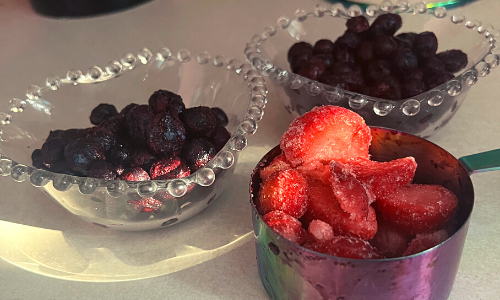
2. Add your berries to a saucepan at low to medium heat on your stove. Mine are frozen, feel free to use fresh. 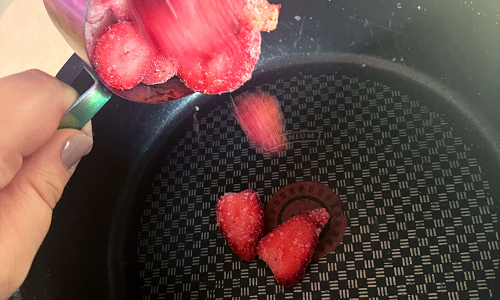
3. Add ½ cup of water. This is an important step to avoid burning those scrumptious berries! It’s important to use clean, pure water. Used by the U.S. armed forces in some of the most difficult areas of the world, The Water Freedom System is now available to you at a very special price. It’s easy to build and it can generate 50 gallons of that per day. Out of thin air! 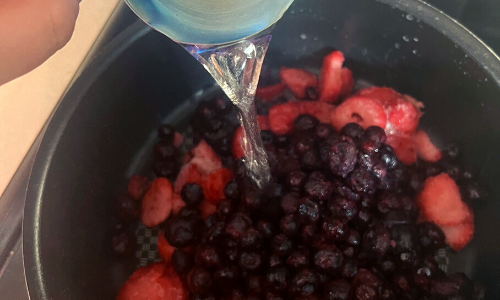
4. Simmer the berries for 30 to 40 minute. Simmering is the point right before boiling. If your sauce looks like a bubble, your stove is too hot, turn that stove down!
This part breaks down the berries releasing the pectin from the berries thickening the sauce.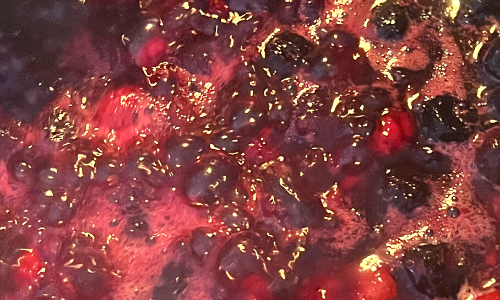
5. I use a Pampered Chef mix in chop to leave a few berries intact for the end product, but if you’re looking for a more consistent sauce use a potato masher.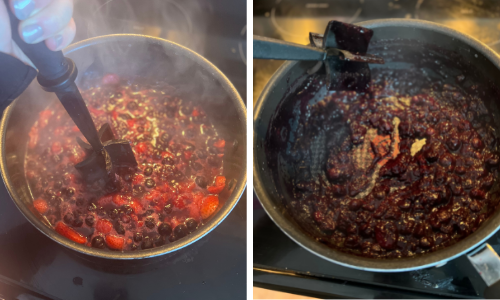
6. At this point the Wojapi sauce is finished. I’m looking for a tart sauce to serve with my venison. If you want to sweeten it feel free to add 2 tablespoons of honey or Maple syrup.
Make sure your sauce is as thick as pudding. If not, simmer for longer.
How do you preserve this sweet sauce?
This sauce can be frozen and kept for 2-3 months. I highly recommend canning since this will make the sauce last for 8-12 months.
For large batches you can follow our article on canning pasta sauce as a guide.
Related: Canning Pasta Sauce for Long Term Preservation
This recipe makes about half a pint of berries that can be preserved with this simple trick!
This trick my grandmother taught me when I first started cooking. I do this when I make something and my children eat most of it! It’s perfect for any small batch canning.
- First fill your jar with the hot wojapi sauce. It is imperative that the sauce is still hot!
- Next screw on your lid to your jar and flip it upside down.
- Leave it for 5 minutes to cool.
- Next flip it right side up. Your lid should be suctioned and the lid “popper” should indicate that it’s sealed. (If this doesn’t work, stick the jar in a pan of water and set till it does seal.)
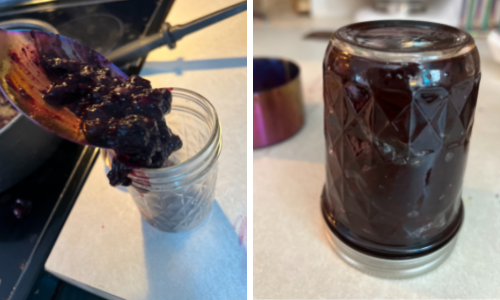
Wojapi Recipe
Ingredients
- 4 cups of Berries
- ½ cup water
- (optional) 2 tbsp. of honey or maple syrup
Steps
- Scoop your fresh or frozen berries into a sauce pan.
- Add ½ cup of water.
- Bring sauce up to a simmer.
- Stir occasionally over the 30 minutes.
- Taste add sweetener of honey or maple syrup to your liking.
- Serve or can it for later!
How to serve Wojapi sauce
You can serve it savory or sweet. It’s delicious on classic fried bread or your morning toast. My children love just eating it from the jar!
This recipe has no added sugar so I can feel comfortable with my kids devouring it by the spoonful. It’s also perfect for people with diabetes as well. Wojapi is so naturally sweet.
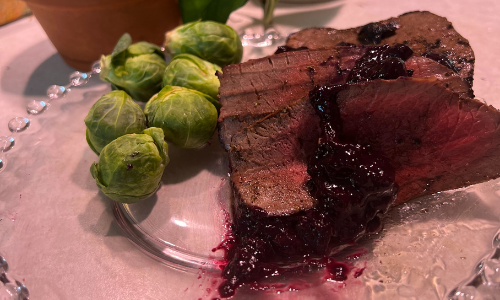
The sauce can be used hot or cold. Reheat it on the stove if you wish.
With this recipe I’m using it with venison steak from a “deer” friend of mine who hunts. Venison has always been a huge part of Native Culture so I had to try this pairing.
Let me tell you the venison just melted in my mouth and the sweet notes from the sauce was to die for!
Other ideas for Wojapi:
- Use it as a dip for fry bread
- Perfect for biscuits
- Top grilled chicken, beef, and venison with it
- A dream compliment to pancakes and waffles
- Add to your favorite icecream
- Drizzle it Cheesecake
- Top your oatmeal (My daughters favorite)
- Replace your congealed can of cranberry sauce with it at Thanksgiving
When SHTF, you surely won’t be able to get to a hospital. Any kind of wounds, burns, infections, and trauma will have to be treated at home. All by yourself. But don’t worry! The Home Doctor provides you with practical, off-grid medical knowledge!
You may also like:
DIY Charcoal Briquettes Every Prepper Should Have In Case Of An Emergency
Forgotten, Long-Lasting Foods That Don’t Need Refrigeration (Video)
The Best Prepper Items To Leave As An Inheritance
A Strange Thing That Might Save Your Life in A Nuclear Aftermath

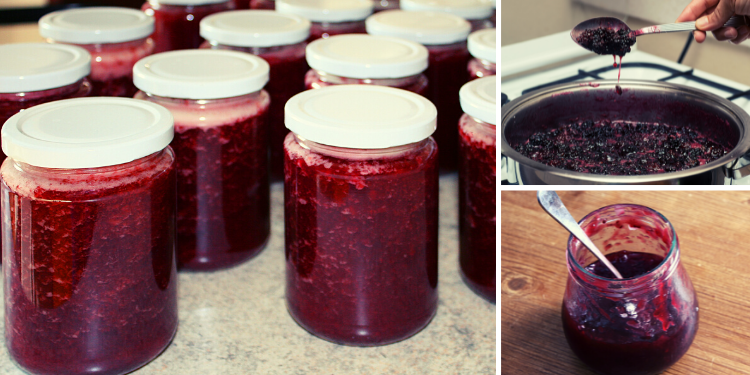





















Disappointed. Saying “Native American” and “Wojapi” in the title is useful to draw in the reader expecting something new and useful. “Wojapi” probably isn’t trademarked so you can call this berry sauce anything you want, I guess, but it isn’t Wojapi. Calling this Wojapi is misleading and a disservice to the Lakota tradition.
Wojapi was made with chokeberries, prairie turnip flour and water.
I’m sure your sauce was delicious on your venison, as any tart berry sauce would be, but you failed to share the Lakota experience with us.
why are you here? this is a site for preppers, not whiners.
A whine is rather loud pitched. Mine was more like a low growl. It’s what I do when promised one thing, but receive something else. What do you do?
If this was something the Lakotas made, please explain how they “froze” or “canned it”. Wasn’t this something they made and used as we would make for say a regular meal and not “PRESERVED” for later use? This, I feel, is misleading.
John: one son-in-law is Lakota. When my daughter made it for him, they used any berries that were getting ripe. Timpsula grows well on the Great Plains, but not elsewhere. Old saying goes, adapt, adopt, survive. Read this.
https://www.firstnations.org/recipes/wojapi-dakota-berry-sauce/
I totally understand these concerns! Lakota used what was available to them, I used what was available to me as well! Chokeberries are not readily available in my area and followed a friend who is Lakota family recipe! Thank you for the feed back!
Today I water bath only fruits.
Mika: We have dozens of bail jars and like them for waterbath. Last fall we got forever lids, and they seem to do as well as metal lids. https://canninglids.com/ BTW, our canning season is year-long and kraut is made only in summer, when there’s no need for salt. It actually takes only a week to 10 days to make a batch. if it starts to stink, it’s over-fermented. niio, walk in His beauty
Wow.
This is a super good article to have in my recipe book. Thank you.
I went and read up on what this article was about, Wojopi sauce.
Spot on. The Native people to this land, Were and still are a Great people. They were very diverse in every way possible, in knowing how to use the land.
Great survivalist they are.
Trade mark?
Seems everyone knows, it’s called Wojopi sauce and was made by the Lakota Native people to this land. Good enough for me as a Trade mark.
Surely, you don’t think, the new arrivals to “there land”, would ever let them have a trade mark, anyway.
Any time I see jelly or jams or fruit sauces. It always brings back good times with my Granny. lots of canning with her growing up.
Thanks again. Good article.
Red Ant, if everyone knows it’s called Wojapi and was made by the Lakotas, why did you go to read up on what the article was about? I had to do the same thing because I didn’t know either. I learned real quickly, that this article did not inform me of how to make it, as inferred in the title. What;s the proportion of root flour to choke berries? Looks like it didn’t inform you either. I won’t thumbs-down you though so if one appears, it ain’t mine.
To my kind friend John.
if you to looked and new this. Why did you not input what you thought it needed. So I, then could have just read your post and then, I would have not had to go and resherch it my self.
We are preppers and we have to fly by the seat of our pants sometimes.
Maybe this is one of those times.
Thank you for any more “info” on what it is you are missing in this article. Would appreciate it if you could post it for us… So I can be informed by some one that saw something, but did not want to inlite others.
that’s okay, .prepper buddy…
up or down, make little difference to me… lol.
that’s what free speech is sill ABOUT. thank goodness…
Red Ant. Let me repeat what the article misses. “What is the proportion of root flour to chokeberries?” The article’s title indicated it would tell us how to make it. Well, it didn’t and that’s why I went elsewhere. The “elsewheres” don’t really say either. I collect traditional recipes and thought I had a new one. But, I don’t need to pin this article to my book of recipes to know what happens if I boil crushed berries. If you do, I understand why you have a recipe book.
O’ Okay. You want to no how much root powder, you will need to make your own Wojapi sauce.
fallow any recipe that shows you how to brake down the berries, into a thick sauce.
Then the root powder is used as a simple thickening agent.
How much is not detemend, I fill it is because, if you know how to use a thickening agent. Then you should already now how much you need to add.
Add as much or as less as you need to provide the exact amount that you are looking for in the product that you are makeing
I do not have an exact measurement on how much you will need, because I use as much as I need when I am making a sauce, of my own.
More you use, the more thicker it gets.
You good now?
Quick little search led me to a First Nations (https://www.firstnations.org/recipes/wojapi-dakota-berry-sauce/) recipe. The root flour is a thickener, so I would assume the 1-2 tablespoons would be a best judge amount for your desired thickness.
I agree that the article was disappointing because of the title. I think it would have been better if Chloe had stated that Wojapi is just a berry sauce/jam.
Prepper in Training. Thank you. Appreciate you.
WOW REALLY….
all that for that…
you should have already known that…
Wow…
red ant: you can use starch if you like. It would be great if we could raise timpsula root here, but they don’t do well west of the Pecos. Too dry for them, I guess. There are supposed to be varieties that grow into the Mid-West and can handle a lot of rain. Of course, I could try yucca, the potato variety. That would give it a chestnut flavor. niio
Betty, Is this You?
Randy
Red Ant. You assume it was for thickening, right? The pectin in fruit is all that’s usually needed for thickening. The author apparently didn’t need further thickening even to the consistency of pudding. How do you know it wasn’t the root flour that was a primary ingredient and the berries were just for taste? If you’ve learned it was for thickening only, can you share your source?
okay my source, comes from being able to read something and understand what it means in the sentence or paragraph, that I am reading.
it’s called life experiences.
From the way you are coming at me. You need to get one….
I need not explain to you on what is or what isn’t.
“Go figure it out by making the recipe and then you can tell me, if it is or isnt”.
You have detemend that it is a primary ingredant. Right?
Then you win the price.
? There, you get a smiley face. Good for you….
Are we done yet???
Pardon my intrusion into the convo. I didn’t get the impression John meant to beleaguere the point…but his question does have merit.
What if the turnip flour is the preservative? Surely the Lakota didn’t pack or store glass jars or freezers so if they produced a mixture that could store in (?) pouches made of stomachs or bladders of deer then how did it not mold or turn rancid or toxic? Modern preserving relies on either acids, sugars or long pressurized cooking methods to safely store wet type foodstuffs.
Many items that seem simplistic or singular in use are actually complex molecules which offer many benefits in the proper ratios.
The arguing and bickering in the first few comments on todays
article are topical of what goes on every day.
LCC says that freedom of speech makes it all right to post the
vulgar,profane,vile,and often disgusting remarks.
Michael says that comments must always add something that is
constructive to the topic while ignoring the rude,crude,and socially unacceptable rants of the Raven Bullshit Crew and the
Illini Weirdo.Does that work in most peoples world?
The #1 Prepper site is Survival Blog and they have stopped all
comments because of exactly what goes on here.
Take a look at ModernSurvivalBlog.com for high quality articles
and a complete absence of idiotic comments.Stupid is not allowed no matter what.
The Prepperwebsite.com is a treasure trove of relevant and important information.You will find no “How to make tree bark
flour” articles there.
There is good stuff out there and it’s easy to find plus there is very little bull shit.
Ron as you well know there is NO stopping “vulgar, profane, vile, and often disgusting remarks” and “ignoring the rude, crude, and socially unacceptable rants” seems unacceptable to your august self.
BTW it’s Typical not Tropical, Tropical is a geographic term often commonly used to describe the fruits from that area, I.E. Tropical Fruit Salad and such.
The internet is full of self-important creatures with a computer or other internet capable device. They THRIVE on attention and their behaviors is to generate response.
Thus, IGNORING them and responding only to the reasonable folks is my chosen manner of internet conversations.
However, with those that seem to have the promise to become a reasonable and useful poster I encourage their positive postings.
Illini Warrior has occasionally posted something useful to the discussion threads. Sometimes I disagree with his viewpoint but when he’s not attacking folks, he is worth reading.
Modern Survival Blog is a good site and is Moderated by Ken to ban folks. For example, yourself Ron has not posted on MSB for quite a while. Maybe you should check in there and post so you can share your wisdom there.
SO, Ron this is your what? Second or Third Rant against Ask a Prepper? You seem driven to keep returning here, WHY? As Ken might say “Change the Channel” like he told you about a year ago.
NOW to the thread at hand, a slightly misleading article to tell us how to make jam from berries.
I did LOOK UP “prairie turnip flour” and found out a fair bit about the Snip: The Prairie turnip, known by a variety of names such as breadroot, Timpsula, prairie potato, and scurfpea, is a staple of the indigenous populations of the North American plains.
The prairie turnip plant resembles the ordinary turnip (Brassica rapa) only in that it grows underground. The prairie turnip is a legume whose root forms a long, thin, edible tuber about four inches below the ground. It is covered by a thin skin which is easily removed to reveal the starchy white flesh inside. The plant above ground has several medium sized compound leaves and develops large purple flowers in the late Spring. After flowering, the plant breaks off at the ground and blows away like a tumbleweed, spreading its seeds.
The tuber, which is high in protein, starch and vitamin C, is collected in June or July when it is ripe (according to Kay Fleming “in Lakota, the month of June is called tinpsila itkahca wi, meaning the moon when breadroot is ripe.”). It can then be consumed fresh by boiling, baking, frying or roasting or it can be processed and preserved for later. The method of processing usually involves drying and pounding to create a flour like substance. This can then be added to soups to thicken the broth, or to make a porridge or trail bar. More recently it has been used in some recipes for Indian frybread, particularly in the northern plains states.
So, it can be used to thicken a jam made from chokecherries as the article implied. It was also better known to be used to make a Porrage with the Chokecherry jam as flavoring.
So even a not so useful article CAN Generate useful comments as folks chime in with their own experiences (thank you Grandma) and internet research.
So, RON, when will YOU Post something useful to a thread discussion?
I am certainly no gourmet chef. I think they lost my application to Cordon Bleu School, but wouldn’t a teaspoon, tablespoon full of corn starch accomplish the same thickening process? Or does it have to have prairie turnips to be authenticate? Isn’t this a recipe for blueberry/strawberry jam?
Inquiring minds want to know.
I stopped going to MSB because it was overrun by ignorant commenters, checking back I see it’s much better now with the editor sending off topic comments to an off topic section. Pretty cool. Article today is, “Make your own dish soap”, not exactly cutting edge Prepper info.
Good info on Psoralea. The article’s recipe is just a basic method for making preserves, something I learned from Grandma, as others here have said. In most of Texas you would use wild plum or wild grapes instead of chokecherry, and native thickeners would be starch from cattail, Smilax, or Wapato among others. Native fruit has enough pectin to thicken into a slurry but it saves a lot of over cooking to add a starch. I make jelly from wild grapes and preserves from the little brush plums, don’t add sugar, the wild taste of the unsweetened fruit is not to be missed.
Jalapeno jelly is hard to beat.
Judge Holden, I quit going to most if not all survival groups other than this one (and even here I rarely comment) because too often I have been criticized and attacked, and that’s just not my gig. Work together & learn is great. Infighting and attacking is not.
Ah. That’s what reminds the rest of us to be adults though.
Leave it to Michael to point out and make an issue out of a simple typographical error. I think that he must be related to my
wife and her sisters in that they all know everything and are not
bashful about letting you know.
Oh well. Off to do important things. No more time for nitwits.
Yet somehow oh busy Ron you “Find Time” to Waste on us poor peasants. Boo Hoo I am SO Grateful for your attention… LOL
And YET you *still* post Nothing Useful to the thread.
Go away and DO “Important Things” like buying Cheetos before shortages limit your consumption.
THERE Ron, IS that the response you Opinion I should DO to people like yourself? You WERE Complaining that I ignore stupid commenters like yourself so Here, it that the Response you’re Seeking from me?
Ignoring you seems the best choice.
Well actually, I think your typo read “topical”. Michael was wrong when he said that you said, “tropical”. It’s easy to type the wrong word, but sometimes the best of us “read” the wrong word too.
He typed ‘topical’. Between typo’s and auto-correct its hard to say. Some people’s grammar and spelling should be taken with a grain of salt. (Just shut up.)
As used in his sentence I think he meant ‘typical’. Definitely not ‘tropical’ as was claimed.
However the whole back and forth on the subject of ‘authentic’ recipes and ingredients is sort of childish and does not add to the readers’ enjoyment. You might as well have said ‘use poke berries’. Poisonous, but some people would believe you. That would be worth a stern correction in no uncertain terms.
I guess I must be missing something because I’ve read over this twice and only see berries with optional sweeteners being used. Which is basically berry syrup or jam depending on thickness, where I come from. Where does the root powder come in, and how does one obtain it? I see some commenters saying it’s used as a thickener, which makes sense, but there’s no mention of that at all in the recipe. So, no chokecherries, no root powder, and glass jar preservation as in any old jam recipe. What is the “Lakota secret” the article title implies?
I’m sure the traditional fruit sauce – however it is labeled – made with chokecherries and starch would be very welcome treat during Lakota winters, but I do agree with a few earlier posters that this article it not quite a recipe for the Lakota “jam”…
The chokecherries that grow wild where I live have very little flesh and a lot of pit. I would think they would have to be cooked with the pits, then the the sauce “strained” off to finish the final product with starch.
Just speculating on the process, but I will be looking for further information, and might just forage for enough chokecherries to try it!
If you’ve never eaten chokecherries you’re in for an experience!
The older generation were made of sterner stock….I need lots of sugar with chokecherries!
They have a lovely, rich flavor, but not really a fruit for eating fresh…lol
The only thing I’ve ever done with them is fill a big glass jar with cherries, pour in some sugar and fill it with rum. Drink it for Christmas!
I will also have to agree that this article has only a little to do with the traditional Native American Wojapi sauce. I read it expecting to learn about how the Lakota made the sauce and how we can recreate it using those same ingredients and techniques as we might have to under less than ideal conditions. Instead, we find out how to make a mixed berry jam/sauce (depending on how well it set, I suppose) out of berries we pull out of our freezer.
Doing a quick search, even the native website recipes end up similar to this one with the main difference being the addition of cornstarch or arrowroot as a thickener, which makes the expectation of the traditional recipe more important here.
Well, since I do not have chokecherries or root flour available at the moment, though I might in the future if the things I think will happen do happen, and I think this is a useful berry preservation method, I am just going to use the berries that are available to me, along with the thickeners available to me and see how the recipes works for me.
Get some practice now so if/when I cannot get the ‘regular’ foods now I will have the experience and knowledge gained by practicing the recipe with what I have. I can see the result as a great comfort food for children, and some adults like myself pestered by a sweet tooth.
So, since I have done some extensive research into The People, and know what they are capable of and the amazing things they have accomplished, it does not really bother me there are a few discrepancies in the article (and the comments).
This is a survival resource and a recipe. Not an detailed educational dissertation about the origins of the recipe. Only a side note of where it came from, of little importance to the recipe.
Anyone that wants historical accuracy about The People, or anything else, can do due diligence research and learn as much as they can about any particular aspect of the society.
Right now, it is more important to me to practice my poor cooking skills with things that will make it easier for me to do it successfully, and hopefully get enough practice to do it with the original ingredients if ever I must.
Just my opinion.
Very well said, thank you
We’ve shared a table for 40 years and always liked to cook, but 20 years ago decided we were done with restaurants and fast food, anything pre-prepared or canned or processed and began to cook all of our meals at home using the freshest food possible. Start cooking a lot, learn from youtube videos, try everything. I thought I was a pretty good cook 20 years ago, by now I know I wasn’t. Like tonight I am in the middle of making a simple meal of cube steak, mushroom and onion, and french fries. This meal could really suck but once you learn the proper techniques it is a delicious satisfying and cheap meal, easy to make. One thing I’ve found, stay within your culinary heritage, I wish I could cook like somebody’s ethnic Grandmother but I can’t. Sourdough biscuits and redeye gravy, I’m your man, Thai, Szechuan, or Mexican, forget about it. Eating 100% fresh home cooking is the best medicine there is. I watched a video last week of a chef cooking french fries by slicing the potatoes then immersing them in room temp oil, start the burner and let the oil heat up to 325 at which point cook til brown, about 15 minutes. Looked like it made great fries, gotta get up the nerve to try it.
Psoralea was never common in Texas so I’ve been reading about it, besides its nutritional value and ease of storage what made it the most important food foraged on the prairies was its growth habit, forming large colonies of easily accessible eating. The Prairie tribes had favorite Timpsila grounds and their June camps were always close by. Sadly, large stands of Psoralea are all gone, destroyed by plowing and stock grazing, its value as a survival resource pretty well destroyed.
Indian fry bread was originally corn, probably not treated with lye water. You can make it out of any wild starchy root. Water and root flour, salt if you have it, fry it up in tallow or lard, possum fat, whatever. I ate fry bread for a week on a wilderness trip, it really sucks. Better to Nixtamalize your corn in lime or lye water and make tortillas, arepas, or pone, mmm I love to eat.
Judge: I suppose that I could go on line and find several different ways to Nixtamalize ground corn, but I would rather have the process explained by someone I feel has actually done the process rather than take the word of some professional writer who may or may not have ever actually gone from alpha to omega in the process. Please describe how YOU do the process.
Nixtamalization was indeed done by indigenous Americans. It originated with them. Wood ash was the alkaline source. Some immigrant Europeans bypassed the step and consequentially suffered endemic pellagra.
Left Coast Chuck
Here’s how it’s done.
A few cautionary notes. The liquids are very caustic. First, do not allow liquids to get on your skin or in your eyes. Second, when cooking use only stainless steel or enameled cookware. Third, use wooden utensils for mixing. Fourth, wood ashes must be only from hickory or oak, and especially never from cedar or other resinous wood.
This is a traditional 2-part recipe from a time when making hominy would have been an ongoing process. The first part takes a week for the first batch, to which in old times, would be added to every few days to keep a batch at the ready when needed for the second part.
This is the oldest recipe for hominy, but there are other recipes utilizing store-bought lye, pickling lime or baking soda.
Hominy is the only form of dent or flint corn use for human consumption, nutritionally.
Directions for Part 1 – The Ashes
Sift 1 gallon of oak or hickory wood ashes into an earthen or food grade plastic container with a lid.
After sifting out pieces of char, stones or unburned wood from the ashes, slowly add water and stir with wooden utensil until it looks like a thick, muddy slurry. Don’t overfill with water.
Cover and set aside for one week. After removing part for using in Part 2, you can add fresh ashes and water to maintain an ongoing batch.
Directions for Part 2 – The Hominy
Wash and rinse 3 pints of dried dent or flint corn. Add to large stainless steel or enameled pot.
Carefully add 1 quart of the wood ash slurry from Part 1.
Slowly add 1 gallon of water, being careful to not splash the slurry. Slowly stir until mixture looks like muddy water.
Bring mixture to a simmer and cook for one hour, occasionally stirring.
Allow to cool 1/2 hour and use wooden slotted spoon to retrieve hominy from mixture, placing hominy into a second pot. Avoid as many of the loosened husks as possible.
Rinse and drain hominy 4 times in water. Afterwards, you can safely remove any remaining husks with fingers.
Discard cooking water outside on the ground or in a compost pile. Adding to compost pile will raise the pH so be aware of this if composting for garden.
At this point, you can add water to cover the hominy and boil (approximately 1 hour) or until soft for immediate serving, salted and buttered to taste.
Thought I’d read where wood ashes work for the lye component in corn products.
Sounds good.
I wish Red would chime in on this. He probably has recipes handed down through the family for making this.
One thing I found out a long time ago when I was researching native American foods and preservation methods was that fruit in general was mostly sun-dried to preserve it for future use. So the recipe for the fruit sauce or jam probably would have been made with dried fruit. I actually made homemade cranberry sauce last Christmas, using cornstarch to thicken it. It tasted fine, (I also put sugar and orange peel in), but it did have more of a molded pudding consistency than a jelly.
I also don’t know if chokecherry has the cyanide content to the seeds that other cherries do. Preparations of chokecherry I came across in my reading seemed to use the entire berry ground, pits and all, but I wouldn’t recommend trying it because most cherries do have cyanide in the pits. Pitting chokecherries would be a major pain because they are so small, but the pulp has a good flavor and they are chock full of vitamins and antioxidants, so they are a good forage fruit.
No chokeberries? This isn’t what you say it is then. Just like everything else – steal from the Lakota and bastardize their traditions. I stopped reading about 2-3 paragraphs in. Waste of time.
I don’t know whose “S” will “Hit” whose “Fan”, but I’ll say this. When my hoard is exhausted and I have to revert to what I can hunt, raise or forage, it would be useful to know how to prepare that which I am able to find. Every culture in existence is here, today, because they had ancestors who learned their lessons the hard way and passed answers to the generations that followed, up until the time we started depending on others to prepare our foods for us. So yes, though the article was well written (good writer) it did not provide insight into how a culture, other than mine, prepared that which they used to survive.
After reading all the comments it sounds like the prairie turnip flour thickens the fruit far enough to flatten on a rock or skin and dry in the sun. Reconstituted in a vessel w/ water & hot rocks to desired consistency.
If this is the case then cornstarch won’t work…perhaps almond flour?
If the traditional plant is gone or endangered might we not want to contribute to its further scarcity and find a workaround?
Sound plausible?
Regarding other posters wanting an actual Native American recipe, I doubt that they had one..? If they found excess food in season, they preserved it the best way they could, and over centuries probably settled on things that worked the best. They probably adjusted the amount of starch/ingredients according to how juicy – or not – the fruit.
I don’t know if Prairie Turnips are exactly endangered, except that open prairie areas are fewer and farther between. I did find several sources for seed, and possibly even 1 year old roots. I’d like to try growing it, but it sounds like a rather long-term crop – several years to be usable. I am also not technically in “prairie” country, so I’m not sure my soil qualities would work. I may try to order seeds someday, but can’t find any available for this year.
http://prairieoriginals.com/prairiewildflowers1.php#INDIAN_BREADROOT
flyovercindy personally if you look over the Prairie Turnips nutrition description, you’d find growing plain old potatoes quite as good. Both can easily be stored; both can be used as a “thickener” in soups and such.
That and a hill of potatoes will give you a lot more calories than harvesting several of those plants. Potatoes are also easily hidden in flower gardens as most folks don’t know what they look like aside of “Farmer Rows”. I’ve hid them in flower beds in HOA’s as a gag and they never noticed them until I dug them up for harvest.
I know of no wild crafted foods that have anywhere the calories per square meter growing space as potatoes, corn, winter squash, beans and so on. 3 sisters plantings spring to mind? Just don’t do the summer squash-sweet corn and green beans like some 3 sisters I’ve found on the internet. My Cherokee Grandparents NEEDED real calories and storable calories.
Thanks Michael, I DO grow potatoes, and squash and beans, sometimes together – I like to grow stuff, so wanting to grow Prairie Turnips or Indian Breadfruit is just something I’d like to try. They take years to produce usable roots, so I have no illusions that they will be a prepping solution.
Since there are thousands of things I’d like to try, this one may not happen, but I enjoy learning so no matter the subject matter of these posts, they usually start me on a search for something.
I have at least a month before I can start any potatoes, but I sure will!
As far as preserving fruits, etc , anything I’ve read indicates that most times the native peoples usually preserved the separate ingredients, then cooked them together at a later time. The ingredients for pemmican, for instance, would have been smoke-dried meat, rendered fat and dried berries. These components would have been ground, mixed together and put into cleaned intestine as sausages. Other tribes would form cakes of varying sizes and break off what was needed for eating while traveling or to add to soup. The cakes would be wrapped in a piece of leather or flexible bark and stored in a box, basket or parfleche (a bark or leather container made similar to an oversized envelope and tied shut).
The reason for preserving the ingredients separately would be primarily the difference in harvest dates, as well as to prevent cross contamination should one ingredient spoil ahead of the others.
Hope this answers some of your questions.
While browsing some great comments I noticed some were saying chokecherries. I’ve been saying chokeberries so I went back to read the article again. The author says chokecherries in the beginning and then switches to chokeberries later. I was confused, so again had to go elsewhere to another site to clarify. They are not the same thing, but it is the chokeberry from which Wojapi is made.
This article is nice and upbeat but does not utilize the safest methods of canning fruit. In order for a jar to seal properly, the lids need to be heated for about 10 minutes or so in hot water so that the rubber seal is pliable enough to mold around the top of the glass jar. A water-bath method of sealing of jars is much safer than just flipping the jars. The jars might then last 18 months, stored in a consistent temperature.
If one wanted to be full-on authentic native method, then the method might include creating a clay jar out of local clay, filling it with sun-dried berries. This would be possibly stored underground, hopefully, not in the path of some burrowing creatures. When ready for some jam, it would be made for that particular meal. There might be some nice stories about how food was preserved by the natives early on but, the reality was that hunger was a big part of their lives.
Hello Sagebrush Lin, I have to chuckle at your gentle comment about “full-on authentic native method” 🙂
Too many folks romanticize the Native American’s “Old Lifestyle”. They were so ecologically wise they would girdle trees and plant crops until that area was desolate and move onward to a new village site. They were so skilled in finding wild foods that starvation in winter and spring was a common reason children and pregnant women died. And so on.
Even now with all the modern food and free medical care they want with Indian Welfare and UNTAXED Gambling Casino funding the Average American lives to some 72 years while the Lakota live to an average 66.8 years. Census data.
Maybe I am soured by hearing the real truths from my Cherokee Grandparents and working briefly at an Indian Medical facility. If you think inner city brutality to women and children is bad you should see what happens on the Reservations. They even have their OWN Police Forces and even the Feds have to ASK Permission to investigate troubles within the Reservation. Murder and rape are almost never punished. Revenge killings are common.
Wildcrafting is a nice way to add some variety (AND Danger) to your food supply, but the most successful Indian tribes grew crops.
Plant potatoes friends, the Irish Immigrants taught the Indians about potatoes. 🙂
Michael: 80% of that ‘untaxed casino revenue’ goes to the state and more to the feds. we have records dating back centuries called the year count. Unlike Europe, very rarely were there famines. Modern ecologists admire that the ancestors burned off thousands of old-growth forests because old-growth forests produce nothing. Any oxygen they make is used by fungus that gives them back CO2. Within a few years, brush was thick and so was game. Villages were planted on the banks of rivers because when the spring flood came, it renewed the soil. Read the Plowman’s Folly. After harvesting in the fall, gates to the fields were opened and wild animals flooded in to feed. That added a lot of nutrients to the soil. When Europeans came, they had to be taught how to conserve the soil for good crops. Not a stupid people Euros adopted everything, even unto raising 3 or more crops in the same field. maize for sweetcorn and grain, and the sap for sweets. Beans climbed the stalks while squash and pumpkins grew around the edges. Animals do not like the pickers and usually avoided the fields.
Women were in charge of many things, something Europeans later adopted, giving women the rights already granted by God. Women, not men, decided what to plant, who could fish on their sections of rivers, who could hunt in their forests. What was old, is new. Farmers going back to the old ways are making money, not sucking off the taxpayers. I know of fields that have produced good crop since long before Columbus was born. for that matter, the Maya turned the Yucatan into one giant food forest centuries ago.
There are more spotted owls in Seattle than the wilds of Wash. State. Why? Because there are few barred owls, which eat them, and a lot more mice.
Michael,
I tend to be suspect of some of the choices people make in life, thinking that they’re going back to how things were 100 years ago. In the 1970’s, the hippie era had the granola-live-off-the-land people. People got this wild idea that they could survive growing all they needed, even though they had few skills in that area. Wearing beads and a long granny dress, did not make anyone ready for self-sustaining living in the 1970’s.
Those in my life, who celebrate their Native American background are fabulous people. One gentleman I know, qualified for various benefits but refused them because he felt, as a Christian, he should not accept them. His children are off the charts, when it comes to their IQ levels. Of course, I have known a few who did not make such great choices in life. Part of it I blame on the big casino culture.
Red I will not argue with you friend. I suspect it’s mostly viewpoint and opinion differences. I respect your postings here.
Indians are people too, a very diverse people indeed, often at war with each other long before the “Europeans” came along. Usually about food sources and slaves.
The Indian traits your describing sound like those that my full-blooded Cherokee Grandmother on one side of my family described. But she also told of less romantic issues from her Grandparents era. My year in the Indian Medical system was not on a Cherokee Reservation.
Again, the most successful Indians grew crops. Wild crafting as the main source of your food was less successful some years.
As far as Casinos an IRS snip: In reality, it’s all quite clear. The federal and state governments are not allowed to charge taxes on the tribe’s activities. This means that the casinos don’t need to pay taxes to the federal or state governments, although there are usually still compacts and stipulations that see casinos paying local counties or states a portion of the profits.
Peace my friend.
Michael: When were you on a rez? Every year, laws change and we all lose more.
Eastern Cherokee rez is a state rez and pays state taxes. OK Cherokee rez is an Oklahoma rez and also under all taxes. One son-in-law is Lakota and they pay taxes on the reservations. One brother-in-law is a Mohawk from the Watertown area. Same there. Only one rez doesn’t pay taxes but nor do they get welfare because the UN and US recognize them as an independent nation.
Sell a pack of cigarettes on a rez and don’t pay taxes on it, you go to jail. Any income to an individual is taxable. All of us pay, and often pay more if we can’t donate the 5K dems demand before you can take charities off the taxes.
https://www.irs.gov/government-entities/indian-tribal-governments/itg-faq-1-answer-what-are-the-different-ways-that-tribal-entities-can-be-structured-and-what-are-the-tax-implications-of-each
Most reservations will form a corporation in order to get loans, and all corporations are taxable. Clinton saw to that. Most profit from these corporations go to individuals and community projects like medical care. Extra monies are also shared with outsiders, including whites (ask Clergy Lady about how the Navajo rez helped when asked) because of the korema law, the brotherhood Columbus was so joyful over.
A lot of us here are American Indian, metis, mestiso, gvna ki, and others. None of us mock whites, tho it is whites who dragged us all into this mess. And, yes, stands around the fort playing the skin game helped. niio
Sage; thank you, I had missed that point. Even using bail jars and forever lids the rings must be heated in boiling water. When the price of metal lids skyrocketed, we bought a few hundred forever lids. they seem to be better than metal lids.
Clay jars were coated with bees wax and kilned again to force the wax deep into the clay. Clay contains lead and other metals. That was used for wine and brandy jugs, too, and sourmash the old folks used as a ‘rumatiz’ medicine. niio
Red,
I will look into the forever lids. I am all for having things last longer and being reusable.
I have come down with a cough/cold that has kept me home and not going out in public shopping for fresh products. I cracked open my big #10 can of powdered milk for my coffee. Horrible stuff. That powdered milk is just a little too much like plaster of paris in flavor and texture. When my relative used to make regular trips down to Chile, she would bring back a lovely creamy powdered milk that made the coffee better, not like this bitter plaster of paris stuff. I don’t know, maybe the local Mexican store imports products from Chile. I will need to look into that.
Sage: we got them from https://canninglids.com/
Yeah, I do a lot of shopping on-line. I found 4x4x8 feet long for 5 bucks each. He gave me imperfects for 2 each. Lemons are 10 lbs for 5 bucks is you’re willing to run to Tucson (45 miles away). We had a very, very good citrus season. I put out a Meyers lemon last month because it wouldn’t quit blooming.
There are recipes on-line for adding butter to powdered milk to make it 3-4% milk or into cheese. I have a problem with dairy but am OK with most cheese and yogurt, as long as I eat no other carbs and mind how much is eaten. But, if you powder milk with butterfat included, it should taste close to milk. No, I don’t know. we always had dairy animals LOL. But, as well, any fats in the milk can turn on you. niio
Red,
How much fun to get such incredible lumber prices! It makes building something more of a pleasure. I have a small structure on my back patio I need to finish. Parts of it were put together back when Home Depot used to have better lumber in their “seconds” pile.
I will try doctoring up the powdered milk. I have an opened jar of malted milk – maybe that will make it more palatable?
Thank you for the canning lids link.
Hello everyone! I wanted to thank you all for your critiques and wonderful info! I wanted to share with you my choices on fruits and why I did not add the flour. Lakota use what is readily available. I grow strawberries and blueberries in my own garden. Chokeberries are not always available where I am located so I followed what the Lakota would do themselves and use what I have and not waste! This recipe is from a friend of mine in South Dakota, her family doesn’t use root flour as a thickening agent since if you cook it long enough it will become thick like pudding without it.
While this canning method is not meant as the best canning technique I wanted to share a trick my grandmother taught me. We make this sauce often in my house and it doesn’t last long since my children love it. Which is why I added a link to our awesome spaghettis canning recipe since the process is the same. Thank you all for your commentary and will keep this all in mind in future articles!
Chloe,
I appreciate your sharing your method with us all. I rethought the canning method you used and realize that there is a place for a quicker method of canning than the by-the-book FDA method. If canning method is too tedious, it is less likely to get done in a busy household. For your household, where food is cycled through quickly, it makes total sense.
I hope that you, again, share your ideas in this forum.
Hey Chloe
ignore the distractors and thank you again for the seasonal fresh fruit canning recipe and your family’s preserving technique. Simmered ripe fruit is really flavorful. I will sterilize the jars and give your method a try.
Thanks again for sharing this recipe.
Cloe: Can you raise sand cherries? They want full sun and plenty of air around them. They get about 6′ tall and bushy if allowed to spread thru suckers. The cherries are about a half-inch wide, and juicy but have to be picked dead ripe. They’re related to chokes. it takes 2 to tango. Gurney’s sells them in bundles of three and they’ll usually bloom the next spring, and bloom for up to 6 weeks. But, they won’t produce in my area, Zone 9. It’s too warm. Capuli cherries do well here but I can’t find any. niio
Thanks for telling How To Make The Long-Lasting Native American’s Wojapi Sauce. I am impressed by your post. It contains very informative data and i gain a lot information from it. It is very useful for me. Thanks for sharing and keep on sharing that type of posts.
Not to create more confusion but here in the south we would call this a fruit butter. Authentic or not it’s a great use for fruit and any easy way to store fruit and calories. In a shtf no one’s going to care if it’s Authentic but it will be a nice break from rice and beans
111
Yikes. I’m SO GLAD that I stopped reading this blog a couple of years ago due to nasty comments, comments that had nothing to do with the post but was just personal bashing, and too much advertising for products the staff wants to sell. Thought I’d come back to see if anything had improved. Nope. Too bad. The thoughts behind the name of the blog are worthy of a good blog. Wish this one was. Bye.
Feel free to bash me…I won’t know as I won’t be back again.
Hi Carl, thanks for taking the time to share your feedback. We’re sorry to hear that past experiences with the comments section left a bad impression. We now actively moderate and filter out personal attacks or off-topic comments to help keep discussions respectful and on-topic. We appreciate you stopping by again and hope you’ll find future posts more in line with what you’re looking for.